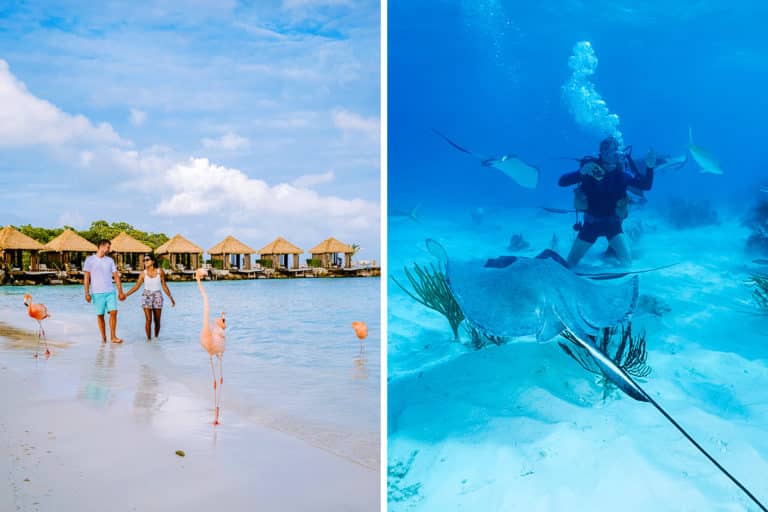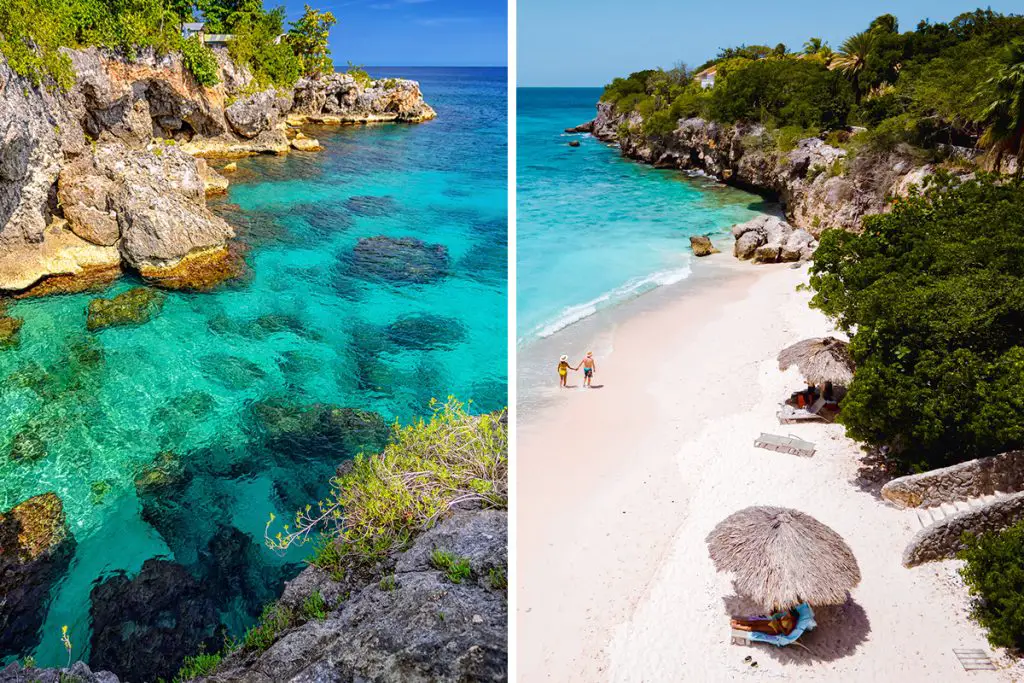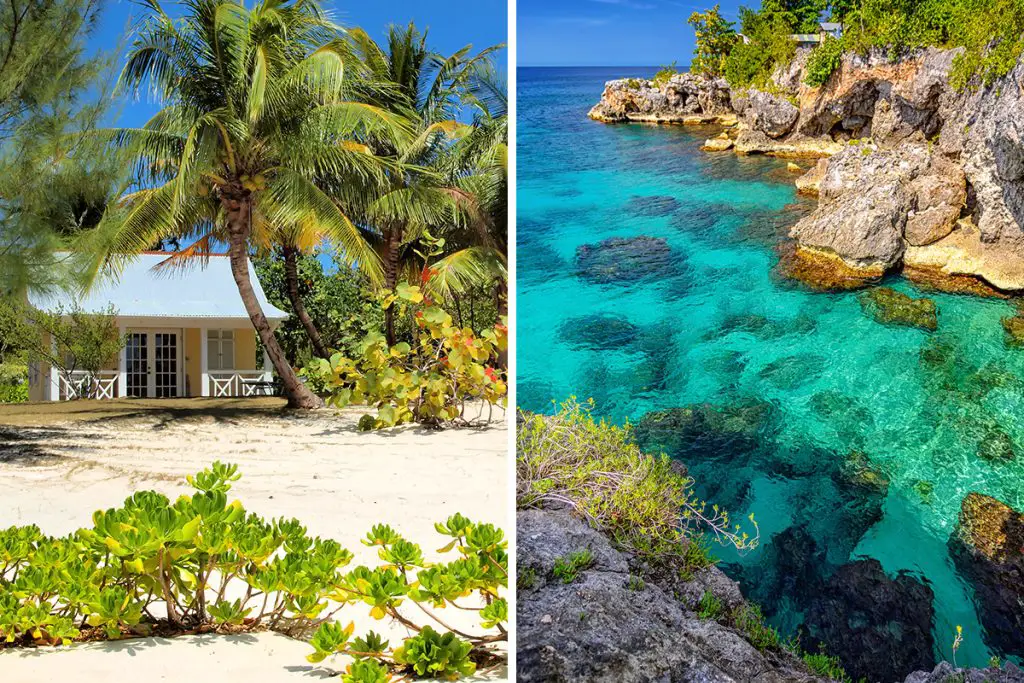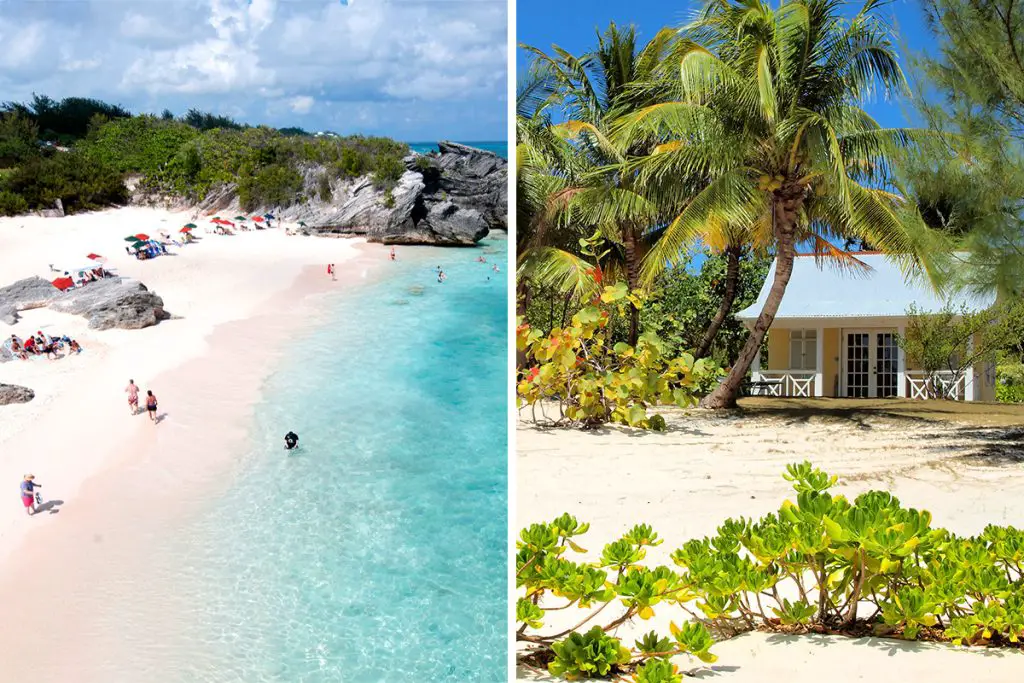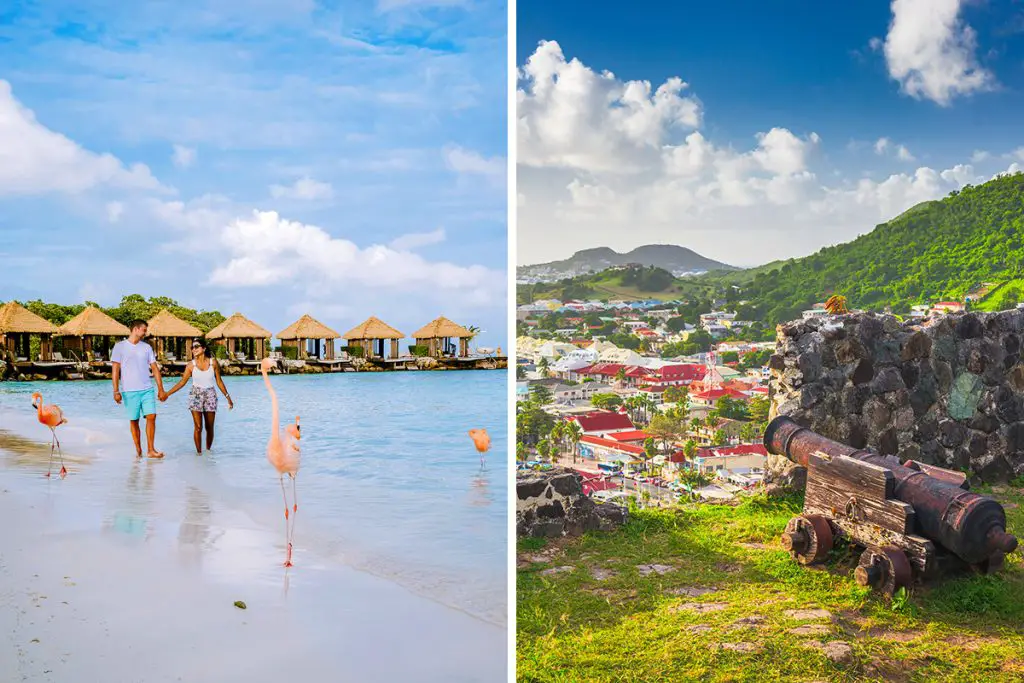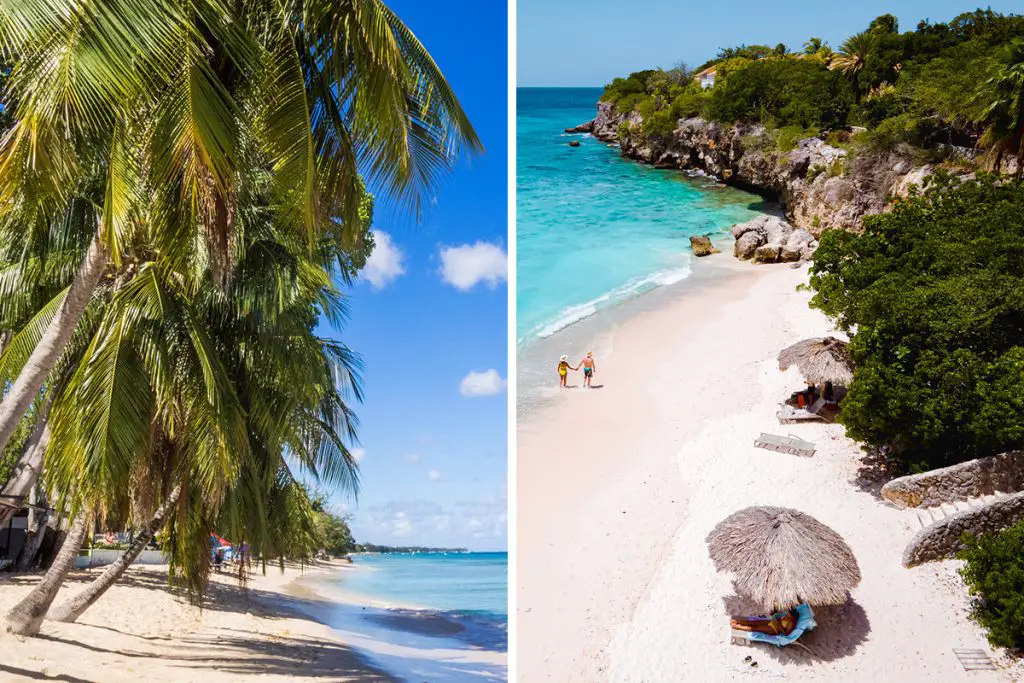With eccentric features and exotic draws, Aruba and Grand Cayman add to the Caribbean’s already enduring appeal. However, when visiting both these destinations you have to at least be well-prepped in a monetary fashion. Aruba and Grand Cayman, one tiny, one underrated, certainly do not come cheap.
Aruba
Of the three Dutch Southern Caribbean islands, Aruba is the most famous. Attested by the sheer number of its visitors annually, the island offers the best of good weather and good culture. Expect to find plenty of adventure alongside peculiar landscapes and gorgeous coasts.
Aruba is also a rich blend of different cultures, thanks to its long history. Expect to find not just a varied landscape but a diverse cultural landscape as well. From its cultural side to its natural wonders Aruba has every reason to constantly be at the top of lists.
What Makes Aruba so Unique?
Endless Sunny Days
Aruba’s best feature has to be its climate. Thanks to its geographical location, the tiny island doesn’t only enjoy endless sunny tropical weather. The Dutch Caribbean Island also enjoys hurricane-free weather all year round.
The island lies right outside of the infamous hurricane belt in the Caribbean. The convenient spot in the southern reaches of the Caribbean gives Aruba lesser rain. Even during the rainiest months, Aruba sees lesser rain compared to most of the Caribbean.
With average whopping temperatures of 29 to 31 C, or 84 to 88 F, Aruba can be searing. It is one of the warmest places in the Caribbean. The island has a desert-like terrain, especially in its interiors, on top of its hot temperatures. Aruba can seem too hot for the likes of many.
However, another unique feature due to its location is the notable regular presence of trade winds all year round. In Aruba, the wind with a high of 35 knots in May and June. With average winds of 18 knots, January is usually one of the calmer months.
The trade winds that blow from the Eastern Caribbean regulate the perceived heat of Aruba’s average searing temperatures. Walking around the cities and exploring the outdoors can still be enjoyable. The constant winds make the heat bearable.
Aruba combines a rich blend of windy days, warm temperatures, and hurricane-free seasons. Having all these conditions packed on a tiny island can make a vacation seamless and even more satisfying.
Beautiful And Unspoiled Coasts
Even with Aruba’s enduring fame and reputation, the island is still home to unspoiled, picturesque beaches. Some of Aruba’s beaches even rank high in the world’s most beautiful beaches. Commercial to intimate, Aruba’s beaches are best reserved for the true beach bums all over the world.
Check out some of Aruba’s best:
Eagle Beach
Expect that when visiting Aruba, Eagle Beach is the first word-of-mouth you’ll hear. Beach bars, quirky seaside restaurants speckle the beachside in Eagle Beach. It is famous for its long stretch of white sand that constantly finds itself on the list of the best beaches in the world.
Malmok Beach
Best for snorkeling, Malmok Beach should be on your Aruba must-visit list. Limestone coastlines and a narrow stretch of white sand draw Malmok Beach’s natural beauty. You can have catamaran tours and sailboat stops right at the cove’s pristine shallow shores.
Andicuri Beach
Andicuri Beach has to be the best option to get away from crowds and swaths of tourists. Found on the east coast of Aruba, getting to Andicuri can be a bit of a challenge. You’ll be needing a ‘4×4’ to get here or brace a mile-long hike.
Popular among surfers and boogie boarders, Andicuri however is not best for plain swimming. If you want the silence and the pristine of Andicuri without the water sports, you just have to laze your time away.
Hadicurari Beach
Constantly receiving the easterly trade winds, several watersports can be done here. Hadicurari Beach is popular for kitesurfers and windsurfers making it one of the most exciting spots in all of Aruba.
First-timers can take lessons just across the beach line. And if you aren’t up for all that fun, you can also people-watch or take a dip. Enjoy the phenomenal coastline and exquisite sprawling views.
Boca Keto
Boca Keto’s romantic scenes make it one of the most celebrated beaches on the island. Quiet and hidden, part of Boca Keto’s charm is the effort in finding it. The beach is found right inside the Arikok National Park which is known for giving everyone a challenging hike.
But the beach promises a beautiful culmination. Intimate, secluded, and romantic characterizes the beach. On top of sheer natural beauty, everything about Boca Keta says, “one for the books.”
A Great Watersports Scene
Aruba sits around 864 miles or 1,390 kilometers north of the equator. Consequently, the island is subject to surface-level trade winds that pass through on their way to the equator.
Trade winds can measure up to an average of 18 mph or 29 kph. The phenomenon gives several kinds of watersports the perfect conditions. Aruba is one of the best places for such activities.
Various watersports are big on Aruba’s eastern shores. Head down to beaches such as Hadicurari Beach, Dos Playa, and Malmok Bech, and try your hand in any of the exciting watersports.
Rich and Infused Cuisine
Aruba’s long, and mixed history has given it quite the cultural repertoire. This diversity is best manifested in the island’s gastronomy. Having some of the most interesting dishes in all of the Caribbean, Aruba is worth the heavy grub. European, African, and South American influences flavor many of Aruba’s classic dishes.
The tiny island has managed to combine flavors from the many influences it has and turn its culinary scene into a spectacle.
A genius blend of culinary styles creates artistic yet homey creations. Aruba’s culinary pride comes in the form of fried meals, fish soups, hearty stews, and quirky pastries.
Kashi Yena
Aruba, despite the distance, is heavily Dutch and cheesy. Dutch-influenced food is quite mainstream on the island. Kashi Yena is a cheese ball. These quirky bits are stuffed with spicy meat and coated in Gouda cheese, sometimes Edam.
Funchi
Identical to Polenta, Funchi is a simple cornmeal dish. The island staple is often served as a side dish to most meals. Funchi is usually made by frying and then topped with rich melted cheese or slathered in butter.
Platano
With respect to its culinary influences, Aruba can feel slightly Latin American. Aruba does love its fried plantains. Platano in Spanish, the dish is usually served as a side to a wide array of dishes. Banana is already good by itself, but when fried and caramelized it’s tasty and is perfect for any occasion.
Interesting Mixed Culture
Modern-day Aruba can feel like a rich mishmash of a variety of cultures spanning from colonial times. Its long history is lined with several influences and phases. You can feel the European parentage, specifically Dutch, and its indigenous roots.
The diversity of its long-varied history and diverse culture is most apparent in its customs, traditions, language, and food.
Now, Aruba is a kaleidoscope of ethnicities and influences. Thanks to a series of postcolonial immigration and globalization, Aruba is now even more vibrant and diverse. Influences from the Americas and Asia are most notable, alongside their Dutch cultural overtones.
Upon setting foot, you’ll quickly get a whiff of its modern culture. And you’ll easily understand why Aruba is one of the most popular destinations in the Caribbean.
Grand Cayman
The largest island of Grand Cayman is the Cayman Islands’ capital island and home to its seat of government. Needless to say, it’s also the most happening part of the British territory.
Grand Cayman is one of those destinations that often lie beyond must-travel lists. Thanks to its relative modesty, eager visitors may be in for lots of pleasant surprises. You can unpack a whole slew of draws that can compete with the rest of the Caribbean.
Several things in Grand Cayman are meant for the well-traveled and uber-curious. Expect to see the stunning natural beauty and a rich roster of tourist-worthy features.
However, one thing that sets Grand Cayman apart is that it caters more to the well-heeled globetrotters.
What Makes Grand Cayman Unique?
Divine Beaches
The Cayman Islands are extremely blessed to be gifted with gorgeous natural sceneries. With an exquisite blend of clear skies, soft white sand, and lesser crowds, Grand Cayman’s beaches can be extra special.
Expect to be taken back by the sheer beauty of Grand Cayman’s beaches. Most of these spots can even give a lot of the Caribbean icons a run for their money. Not to mention, Grand Cayman is sparsely touristy that its beaches are relatively unspoiled.
To give you a quick overview of their natural beauty, here are some of the best:
Seven Mile Beach
Seven Mile Beach, which isn’t so in actual length, is one of the most famous places on the island. The 10-km stretch, or 6.3 miles to be exact, is the icon that has helped put Grand Cayman on the vacation map.
Crystal clear aquamarine waters and talcum-powder sands paint the beauty of the beach. Top-rated luxury hotels and resorts also line its shores, alongside lanky coconut palms.
The vast expansion of the beach is accessible to the public. You can have all its beauty and splendor all day regardless of your accommodation. Teeming with establishments, you can wine and dine the night away as well.
The Seven Mile Beach offers a variety of activities. Whether you want to try out different watersports, or just laze away under the sun. The iconic beach will always deliver no matter the kind traveler graces its white powder sands.
Rum Point
Secretly tucked in the northern reaches of the island, Rum Point offers a classic and authentic tropical experience. Perfect for snorkeling and other watersports, Rum Point is the perfect place to hit the waters.
Thanks to the beach’s swimming-friendly conditions and safety, Rum Point is well worth the trip.
Rum Point is a well-equipped place, despite its modest reputation. Locker rooms, toilets, bungalows, snorkel rentals, and volleyball nets are all readily available.
The beach basically offers a perfect balance of fun and relaxation, a few miles away from the bustle of the main beach areas.
Governor’s Beach
Governor’s Beach is perhaps the perfect family beach in Grand Cayman. Located within Seven Mile Beach, the beach is famous among families. The beach got its name because it is located right in front of the governor’s house.
In the fun and safety of Governor’s Beach, families can easily snorkel, stroll and enjoy refreshments. Plus, thanks to its location, sunsets are stunning here. However, thanks to its massive appeal, this beach may be packed on weekends.
Spotts Beach
A more exclusive take on beach culture, Spotts Beach looks like it was built for the moneyed crew. Stacked with sprawling mansions and waterfront condominiums, and an air of exclusivity, the beach is quieter. Also located outside of the major touristy areas, expect to have a fulfilling experience here.
You can enjoy barbecues on the beach, and picnics under the cabanas. Reef snorkeling is also top-notch in Spotts, thanks to the visibility and lesser boats. If you want to catch a phenomenal sunrise view, head to Spotts early.
Notoriously Expensive
The Cayman Islands, unknown to many, is one of the most expensive places to travel to. Not only in the Caribbean, perhaps in the whole world. Funny how its beauty is so alluring but the prices may say “think twice.” But of course, nothing a good budget could solve.
For you to have a clear image of the cost disparities it is important to compare prices of certain products and services. For example, a meal in a restaurant may cost approximately 14 USD in Aruba, also an expensive Caribbean destination. And that meal can cost around 15 USD in the US and the UK, Cayman’s sovereign state. Comparatively, it can cost around 18 USD in Grand Cayman.
Basic utilities in the Cayman Islands also tend to be more costly than the rest of the Caribbean. Monthly utility costs may go around 100 to 200 USD in Aruba. While it can hit a whopping 300 to 400 USD in the Cayman Islands.
The government has expressed its attempts in reducing costs. Living costs such as rent, utilities, internet connection, clothes, and food are still more expensive in the Cayman Islands.
Grand Cayman is a sure worthy place, yet you should take a step back and consider the costs. By comparing prices, you can already surmise how it’s a visit you shouldn’t take lightly, financially speaking. Budget is key.
Culinary Epicenter
When it comes to the premiere culinary scene, Grand Cayman sits at the top of the list. The island has a certain dedication and attention to developing its gastronomy. Grand Cayman and the Cayman Islands’ scene can rival all of the Caribbean.
Vying for the culinary capital of the Caribbean, the British territory is apparently well on its way.
You can expect to find a certain wealth in its gastronomy scene. Upon setting foot, you’ll meet a long list of dining options, and an even wider menu of dishes to sample. The Cayman Islands has a noticeably large number of culinary influences. You can sample them all in Grand Cayman.
Thanks to a wealth of options, you can dine from a wide array of options. You can sample jerk chicken, in authentic homegrown restaurants, to five-star dining setups.
It’s easy to bask upon the culinary wealth of Grand Cayman due to how gastronomy is celebrated here. The island has established food festivals throughout the year. Catch the Cayman Cookout, and the Taste of Cayman Food & Wine festivals in January. Expect to find an even richer variation and a wider array of gastronomic delights in your visit.
Offshore Banking
The term “offshore banking” may seem dodgy, but in Grand Cayman, there is assurance that it isn’t. Due to the islands’ continued economic progress, it has turned into a financial hotspot in the Americas, if not the entire world. After all, it is the world’s sixth-largest financial hub with around 7 billion USD in deposits.
The Cayman Islands’ reputation for offshore banking owes to its higher costs. To establish a business, you have to be ridiculously rich.
Setting up a business in the islands is more expensive than a few other wealthy places. Wealthy countries such as the United Arab Emirates, and Hongkong can even be cheaper than the Cayman Islands.
To open an offshore account in the Cayman Islands, you need to have a connection to the territory. Only a few options are available to foreigners looking to set up shop. But first, you have to choose from the 158 banks in the entire archipelago to create an account.
The major ones are of course found in Grand Cayman, in the capital of Georgetown. You can choose banks based here such as Trident Trust, Cayman National, Cainvest Bank and Trust, and Fidelity Bank.
Which is Better – Aruba or Grand Cayman?
When comparing both draws in terms of experiences and that classic allure of a vacation destination, Aruba no doubt takes the spot. Grand Cayman in itself is an interesting sale, from its cuisine to its stunning beaches.
However, you can still experience all of that for a cheaper price and perhaps even more in Aruba. The little Dutch island still packs huge selling points not just for the moneyed set, but for those looking to go around the costs as well. This is on top of the quirky experiences the island can provide.

